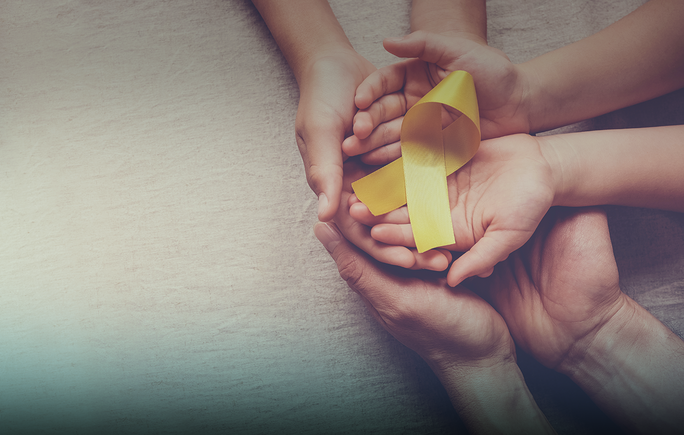Suicide Prevention Day: 40 Seconds of Action

Suicide Prevention Day: 40 Seconds of Action
Table of Contents
Toggle*Trigger warning: Suicide.
“To make the pain end” – *Salma, 23.
“I was trapped in my pain. I was lonely. I was unendurably alone in my pain. There was no hope that it would never end as I still breathe. And it had to end. The pain had to end.” – Malak, a 23 year old young woman reflecting on her thoughts as a 15 year old.
“The thoughts occurred when I thought I was a burden to the world and myself, and I can’t do anything about it.” – Nourhan, 18.
“Pressure. Pressure has always been my trigger.” – Ahmed, 21.
These were the responses of a couple of Egyptian young adults when asked “Why did you contemplate suicide?”
Suicide refers to death as a result of injuring oneself with the intention of dying. It might be difficult for you to imagine why someone would attempt or even seriously contemplate ending their lives or the above statements might just resonate with you. Either way, it’s valid and understandable. However, it is our responsibility, as a society and a community, to give the world suicide prevention day the attention it deserves.
According to the World Health Organization (WHO), around 800,000 individuals die by suicide every year, which means that someone ends their life every 40 seconds. Shocking, isn’t it? However, sadly, it’s the truth. Also, bear in mind that these are just the reported deaths, which means that this number could be an underestimate of the real number. In fact, suicide is the second leading cause of death in the world for individuals aged 15 to 24 years.
The good news, though, is that suicide is preventable. Together, we can get this number down. In this article, we will be discussing risk factors of suicide, warning signs, and how we, as a community, can help these individuals realize that they are not alone.
Suicide rates
One of the most important factors when it comes to suicide is mental illness. 1 in 4 people will experience a mental illness in their lifetime and only a third of those with a diagnosed mental illness actually seek help from a mental health professional. Research has shown that while women tend to experience mental illness almost twice as men, men are around four times more likely to die by suicide. Further, even though women might contemplate and attempt suicide more than men, men are more likely to die by suicide due to the use of more violent methods.
According to the Centers of Disease Contol and Prevention (CDC), other risk factors include, but are not limited to:
- Serious illness
- Previous suicide attempt or family history of suicide
- Impulsive or aggressive tendencies
- Substance use disorder
- Social isolation
- Stressful life events such as financial crisis, rejection, divorce or other life transitions or loss
- Job issues or loss
- Negative childhood experiences such as abuse or neglect
- Bullying
- Sexual violence
- Barriers to health care
- Stigma related to mental illness or seeking help
- Easy access to deadly materials amongst people at risk (e.g. guns, medications)
Warning signs (according to the American Foundation for Suicide Prevention):
- If a person talks about:
- wanting to die
- having no reason to live
- killing themselves
- feeling hopeless
- unbearable pain
- feeling trapped
- If a person engages in behaviors such as:
- Withdrawing from activities
- Increased use of alcohol or drugs
- Giving away prized possessions
- Aggression
- Sleeping too much or too little
- Visiting to calling people to say goodbye
- Isolating from family and friends
- Looking for ways to end their lives (e.g. online searches for methods)
- Observed mood like:
- Depression
- Anxiety
- Loss of interest
- Irritability
- Humiliation/shame
- Anger/agitation
- Relief/sudden improvement (could happen as a result of taking the decision to end their life)
How can I help a suicidal person?
- Learn the warning signs.
- Encourage the person to talk to you.
- Never promise to keep their suicidal thoughts or plan as a “secret.”
- Ask direct questions such as “Are you thinking about ending your life?”
- Try not to be patronizing or judgmental. Instead, try to empathize with the person and respect their feelings.
- Offer to assist the person to take the steps they need to get support.
- Encourage the person to seek treatment. There are many evidence-based interventions that have proven to be helpful for suicidal individuals such as Cognitive Behavioral Therapy (CBT), Dialectical Behavioral Therapy (DBT) and Brief Intervention Strategies.
- Offer reassurance that things can get better.
Final note:
The misconception that people who threaten suicide are just attention seekers further stigmatizes mental health and suicide. Suicidal thoughts or actions are indicators of extreme distress and that the person is in dire need of help. Also, typical responses to stress do not include expressing wishes to die or end one’s life. So, any talk about suicide ought to be taken seriously and demands immediate attention.
The WHO, in collaboration with other global partners, launched the 40 seconds of action campaign. It involves asking people to take “40 seconds of action” to reduce the stigma associated with suicide and let people who are struggling know they are not alone.
Let’s all contribute with our own 40 seconds of action. Take 40 seconds to check on your friend who’s been feeling down lately, share a mental health message on your social media platform, or talk to a trusted person about how you’re feeling.
“Mental illness is not a personal failure. In fact, if there is failure, it is to be found in the way we have responded to people with mental and brain disorders.” – Dr. Gro Harlem Brundtland, Director-General of WHO.
*Names were concealed by using pseudonyms.
References:
- Ghanem, M., Gadallah, M., Meky, F. A., Mourad, S., & El-Kholy, G. (2009). National Survey of Prevalence of Mental Disorders in Egypt: preliminary survey. Eastern Mediterranean health journal = La revue de sante de la Mediterranee orientale = al-Majallah al-sihhiyah li-sharq al-mutawassit, 15(1), 65–75.
- The World Health Report 2001: Mental Disorders affect one in four people. (2001). Retrieved from https://www.who.int/news/item/28-09-2001-the-world-health-report-2001-mental-disorders-affect-one-in-four-people
- Moneim, W. M., Yassa, H. A., & George, S. M. (2011, August 18). Suicide rate: Trends and implications in Upper Egypt. Retrieved from https://www.sciencedirect.com/science/article/pii/S2090536X1100013X
- Risk factors and warning signs. (2021, May 17). Retrieved from https://afsp.org/risk-factors-protective-factors-and-warning-signs
- Risk and Protective Factors. (2021). Retrieved from https://www.cdc.gov/suicide/factors/index.html
- Suicide Statistics and Facts. (n.d.). Retrieved from https://edubirdie.com/blog/student-suicide-prevention-guide
- Suicide: What to do when someone is suicidal. (2018, January 31). Retrieved from https://www.mayoclinic.org/diseases-conditions/suicide/in-depth/suicide/art-20044707
- World Health Organization. (n.d.). World mental health DAY 2019: 40 seconds of action for suicide prevention. World Health Organization. https://www.who.int/bangladesh/news/detail/10-10-2019-world-mental-health-day-2019-40-seconds-of-action-for-suicide-prevention.
- World Health Organization. (n.d.). Suicide: One person dies every 40 seconds. World Health Organization. https://www.who.int/news/item/09-09-2019-suicide-one-person-dies-every-40-seconds.







